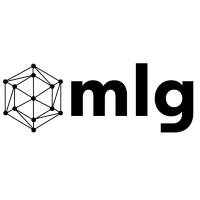|
|
|
Security |
|
|
|
|
Public Blockchain with security features built in.
Lamport digital signature algorithm. Claims to be resistant to quantum computer attacks.
Customized P2P network with data storage encryption, location transparency, source nontraceability
Merkle Patricia Trie data structure

Although the hash algorithm built into Bitcoin and Ethereum is secure with todays technology from brute force attacks, quantum computing may support enough computational power to compromise these algorithm.
|
SGX / PoET
All transactions are signed by known identities.

PoET implementation will depend on that of SGX. SGX is a set of instructions which allows application to run in sectioned-off areas of memory called enclaves. This aims to protect sensitive data and code from disclosure or tampering, both when stored and at runtime. Unfortunately, since Intel first introduced SGX in 2013, several weaknesses have been found in its design.
https://www.theregister.co.uk/2016/02/01/sgx_secure_until_you_look_at_the_detail/
|
Similar security models to Hyperledger Fabric, but also incorporates the IBM Cloud Services as an added security layer when using the platform.

For more information:
http://hyperledgerdocs.readthedocs.io/en/latest/security_model.html
|
|
|
|
Permissionless

|
Permissioned, Permissionless depending on application

Hyperledger Sawtooth supports both permissioned and permissionless blockchain networks. This provides flexibility but lacks the prescriptive level of security hyperledger fabric has.
|
Permissioned

|
|
|
|
Based on zero knowledge proof. Hides the send, receipt address and transfer amount.

Similar in function to the zk-SNARK feature Ethereum added during their Metropolis release.
|
Configrable permissions for any node cluster within the network

Sawtooth is built to solve the challenges of permissioned (private) networks. Clusters of Sawtooth nodes can be easily deployed with separate permissioning. There is no centralized service that could potentially leak transaction patterns or other confidential information. There is no concept of private channels as seen with Hyperledger fabric
contributors are investigating both trusted execution and zero-knowledge cryptographic approaches
|
Private channels

Fabric has a unique concept of channels that supports transaction privacy. Private channels are restricted messaging paths that can be used to provide transaction privacy and confidentiality for specific subsets of network members.
|
|
|
|
Algorithms |
|
|
|
|
Fast Paxos PoS variant.
The consensus of TRON adopts a three-step strategy.

1. Kafka-based technology system: implement a centralized consensus algorithm.
2. Raft-based distributed consensus mechanism: realize the centralized and distributed leapfrogging. Improves network function/distribution and lays the foundation for distribution with no logical center.
3. Consensus mechanism of Proof of Stake and realize the Byzantine Fault Tolerant Consensus.
|
PoET
Dynamic, Pluggable Consensus Algorithms

Sawtooth supports pluggable consensus algorithms but offers their own method —Proof of Elapsed Time (PoET). The PoET consensus has each validating participant wait a random amount of time. The first person to finish waiting becomes the leader of the new block. This provides a secure authority mechanism without the computational race and energy draw of Proof of Work (PoW).
|
Plugable consensus (PBFT)

Fabric’s notion of consensus is broad and encompasses the whole transaction flow, starting from proposing a transaction to the network to committing it to the ledger. It uses the plugable Byzantine fault tolerance (PBFT) algorythm
|
|
|
|
Efficiency |
|
|
|
|
Moderate

|
Fast

Depends on implementation. Processes transactions in parallel to accelerate block creation and validation
|
Varies

Depends on implementation
|
|
|
Block Confirmation Time
Details
|
Fast

|
Varies

Depends on implementation. Processes transactions in parallel to accelerate block creation and validation
|
Varies

Depends on implementation
|
|
|
|
Development |
|
|
|
Proprietary Codebase
Details
|
Open source but goverened by the TRON organization

Built on Ethereum, but planning to move to own main net in June 2018
|
Open Source

|
Hyperledger Fabric is open source. IBM Blockchain is a proprietary layer that sits on top of Hyperledger as a simple to use platform accessing the blockchain

|
|
|
|
General |
|
|
|
Blockchain / DLT type
Details
|
Public

Open source public blockchain fuelled by cryptocurrency.
|
Federated / Consortium, Permissioned Network

Federated Blockchains operate under the leadership of a group. As opposed to public Blockchains, they don’t allow any person with access to the Internet to participate in the process of verifying transactions. Federated Blockchains are faster (higher scalability) and provide more transaction privacy - important aspects for Enterprise focused deployments
|
Federated / Consortium, Permissioned Network

Federated Blockchains operate under the leadership of a group. As opposed to public Blockchains, they don’t allow any person with access to the Internet to participate in the process of verifying transactions. Federated Blockchains are faster (higher scalability) and provide more transaction privacy - important aspects for Enterprise focused deployments.
Based on the Hyperledger Fabric framework.
|
|
|
|
Similar to Ethereum:
Generic, with DApp and Smart Contract support for wider applications

It is not modularity that stands out but the provision of a generic platform suitable for various types of transactions and applications
|
Modular Architecture. Incorporates IoT Sensors that can broaden the use case.

Location, Temperature, Humidity, Shock, Tilt, Motion, Shock - all examples of data that can be captured.
|
Plug + Play Architecture
Easy to operate software platform to build out use case, test, and implement

https://www.ibm.com/blockchain/platform/
|
|
|
|
Currently supports 15 TPS as it is on the Ethereum platform. Will be able to support up to 1000 TPS once main net launches

Scalability is a core feature for TRON. They want to be able to support large commercial projects, while minimizing transactions fees and time.
|
1000 TPS. Built to be scalable in the way that consensus algorithms can be changed, applications are separate from the core system, and transactions can occur in parallel.

The different consensus mechanism features were designed to cater to networks of different sizes and with different requirements. Sawtooth targets large distributed validator populations that do not require much computational power.
|
Supports 1000 TPS. Designed for high throughput business applications. Scales relative to Hyperledger Fabric new developments.

|
|
|
|
Varies

https://tronscan.org/#/blockchain/stats
|
Varies

Depends on implementation
|
500 transactions per block

Same as Hyperledger Fabric
|














